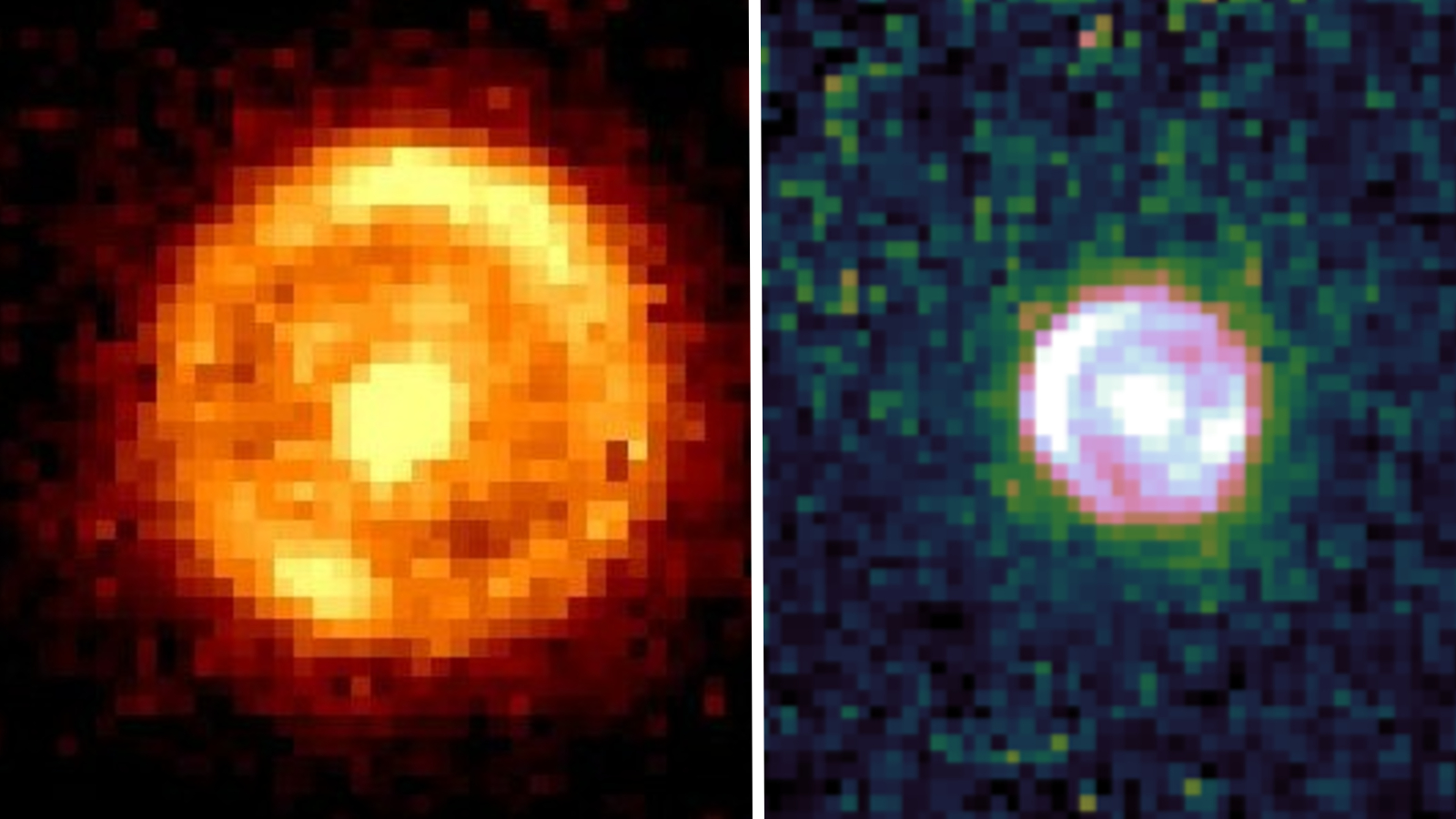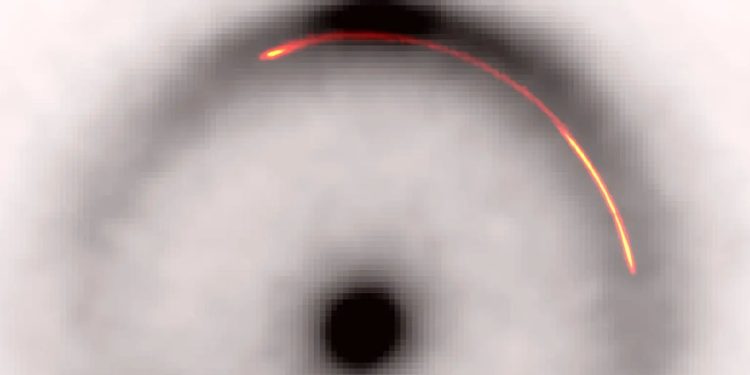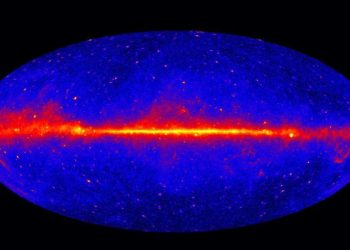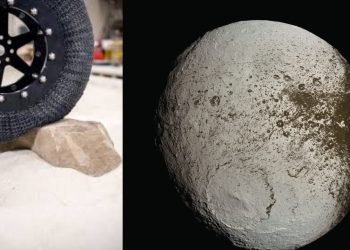Astronomers have discovered a surprisingly small “dark object” hidden in a distant ring of distorted light. This record-breaking discovery could help shed light on the mysterious identity of dark matter, which would have major implications in the field of cosmology.
The hidden object, likely a clump of invisible dark matter, was spotted inside B1938+666 — an “Einstein ring” located about 10 billion light years from Earth. This bright halo (which appears dark in black-and-white images) is made up of light from a distant galaxy that has been bent around a closer galaxy in the foreground (the dark spot in the center of the ring). It is an effect of gravitational lensa phenomenon that was first proposed by Albert Einstein theory of general relativity in 1915.
B1938+666 was discovered in the 1990s. But in two new studies, published October 9 in the journals Natural astronomy And Monthly Notices of the Royal Astronomical SocietyThe researchers took a closer look at the gravitationally lensed object and discovered a subtle oscillation in a prominent arc of radio waves in the outer ring (colored red and yellow in the image). They quickly understood that it was a gravitational disturbance caused by a hidden object.
“From the first high-resolution image, we immediately observed a narrowing of the gravitational arc, which is the telltale sign that we were on to something,” John McKeanastronomer at the University of Groningen in the Netherlands and the University of Pretoria in South Africa, and co-author of the two new studies, said in a statement. statement. “Only another small cluster of mass between us and the distant radio galaxy could cause this.”
The object is about 1 million times more massive than the sun, which seems like a lot. However, this actually makes it about 100 times smaller than the previous record holder for the least massive object ever detected by gravitational lensing.
Study teams discovered the object by combining data from radio observatories around the world, including the Green Bank Telescope in West Virginia, the Very Long Baseline Array in New Mexico, and the European Very Long Baseline Interferometry Network. This allowed the researchers to achieve the observation power equivalent to that of an Earth-sized telescope, which helped them detect such a subtle fluctuation in the data. But there was so much information that researchers had to find a new way to sort it.
“The data is so large and complex that we had to develop new numerical approaches to model it,” Simona Vegettiastronomer at the Max Planck Institute for Astrophysics in Germany and co-author of the two new studies, said in the release. “It wasn’t easy because it had never been done before.”
Although they cannot be certain, the researchers are convinced that the new object is a small cluster of dark matter — invisible matter which constitutes 27% of the known universe and does not interact with light. This is not surprising, given that gravitational lensing is one of the only ways we can detect and measure dark matter, making Einstein’s rings and other distorted objects one of our targets. the best weapons to unmask your true identity.

Finding isolated clumps of dark matter like this is particularly useful for testing the “cold dark matter theory,” which posits that dark matter can only clump together if it moves at relatively slow speeds, meaning it would give off relatively small amounts of energy, Live Science partner site. Space.com reported.
And researchers predict that these clusters are much more common than we currently think. “We hope that every galaxy, including ours Milky Waybe filled with dark matter clusters, but finding them and convincing the community that they exist requires a lot of calculations,” Vegetti said.
To date, only three other, equally small, potential dark matter clusters have been identified, the researchers wrote. However, the new methodology will make it easier to spot more clusters around the existing Einstein rings, and the number of known rings is also growing rapidly, thanks to the James Webb Space Telescope, which has proven effective. exceptionally good at finding them.
“Having found one, the question now is can we find more,” Devon Powellastronomer at the Max Planck Institute for Astrophysics and co-author of the two new studies, said in the release.









